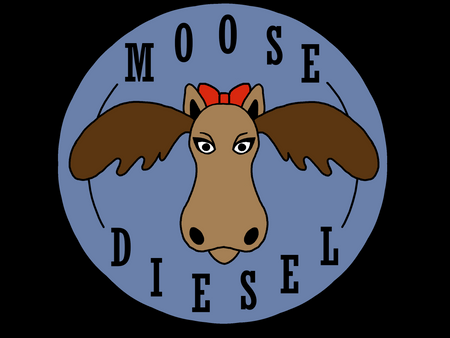
Notes on timing and performance
While the maintenance of a diesel engine may be limited primarily to running repairs, and fuel system component replacement due to mileage and time, an often over-looked or under appreciated aspect of traditional injection pump and injector maintenance, is the procurement and monitoring of proper diesel injection timing.
Modern common rail diesels have various methods through computer programming and learned behavior, to dynamically adjust timing throughout the engine's life. However, older traditional injection technology of the pump-line-injector (PLN) fuel system, relies on mechanical adjustment of the relationship between the time the injector begins to flow fuel, and the piston as it makes its way though the compression stroke. This adjustment is often made at the interface between the injection pump drive shaft, and the drive gear mounted to it, or at the interface between the body of the injection pump and the pump mounting flange. Obtaining a correct start of injection, can be key to obtaining the most power and fuel economy that an engine can deliver.
Once this adjustment is set, then the timing of the engine and the performance it delivers can remain relatively consistent throughout the lifespan of the injection components. A key to understanding this lifespan, is to understand that most injectors will slowly advance the timing as they wear. This is due to increased clearances from wear points eroding away, the weakening of springs in the injector, or dimensional changes from thermal cycling. Injection pumps on the other hand, tend to retard timing, usually from similar reasons. This results in most fuel systems being in balance, assuming all the components are new and in specification. Over the lifespan of the fuel system parts, there seems to be relatively little change in the way an engine runs, although a loss of fuel quantity being delivered is usually experience, reducing over all horsepower available.
Because of this natural balance between complimentary wearing components, it is less desirable to match a new pump with old injectors, or visa-versa. Doing so produces an engine with acceptable running characteristics, assuming the parts are functioning correctly, but over the miles, the timing of the engine will drift in one direction or the other and result in the need for periodic adjustment. Worst case, the engine suffers a malady due to a failed, worn component, and the vehicle is back in the shop for more maintenance. This can give the owner/operator a sense of dissatisfaction from the perception that it needs attention more frequently then it may otherwise have experienced if the entire PLN system had been serviced with new components from the onset.
In short, and while we admit this may sound self-serving, we at Moose Diesel really do feel strongly that any time a pump or injector set is replaced, that the mating component should also be. Owning a diesel engine can be a very satisfying and minimally burdening experience with the right preventive maintenance, which is often just as simple as changing the oil, the filters, flushing and re-filling the cooling system per manufacturer recommendation, and renewing the PLN system every 100,000 miles. Fuel quality and lubricity are major contributing factors in the life of the system, and if your system goes more or less miles, the fuel is usually the reason. The replacement of a pump and injectors is the equivalent of the old "tune-up" we used to do on gasoline engines back in the day, when you would replace the spark plugs, condenser, rotor and cap. And while it may not be inexpensive, doing it at your convenience instead of when the engine forces you to, is the way to stay ahead, on budget, and to remain satisfied with an engine that runs strong and long.
Moose Diesel recommends Howe's Diesel Treat available at most trucks tops in the U.S.A, and also Stanadyne Performance Formula, available at popular auto parts stores and Tractor Supply as a longevity enhancing fuel additive. Used regularly, these additives can really help save money down the road.
When installing a new pump, always follow your manufacturers recommendation, and for spot on timing on an IDI engine, especially in a Ford or Chevy with our Moose Pump products, and be sure to use a dynamic timing meter. If you don't have access to one locally, we offer our timing meter rental program.
